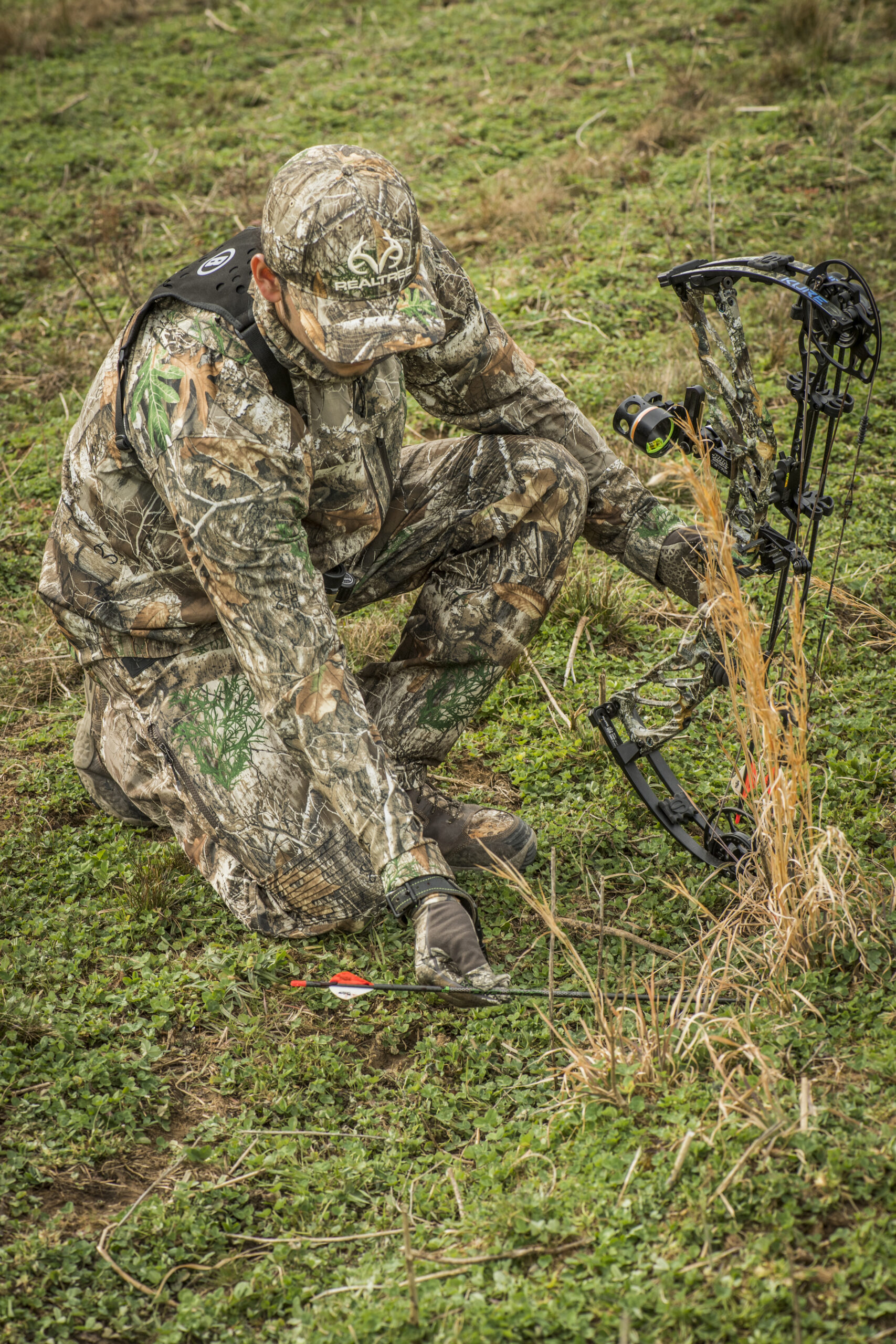Shot Clinic 101: The Single-Lung Deer Shot
This marginal shot can occur, especially when hunting from an elevated position or when poorly placing an arrow on a quartering animal. Here are some ways to go about your recovery.
Single-lung deer shots are quite common in bowhunting, especially when shooting downward at steep angles, or by hitting too far back on animals that are quartering slightly to you. In many instances, particularly on quartering animals, the broadhead hits other vitals such as the liver or paunch. That’s a lethal hit, but the recovery effort should be handled accordingly (see our Shot Clinic 101 entry on liver hits).
Shots that truly hit one lung and nothing else are usually the result of near straight-down shots taken from treestands. When that happens, recovering the animal can be difficult. This is sort of a loaded topic, so let’s look at it from a few different angles so that you can determine how to proceed when you believe you’ve made some form of a one-lung hit.
IDENTIFYING SINGLE-LUNG DEER SHOTS
In the previous liver-hit blog, we mentioned that you can’t always conclude exactly where your arrow hits. But, if you have any inkling that your broadhead caught only one lung, remain in your stand or blind and be quiet. Often, the animal’s immediate reaction to the hit will mimic a double-lung hit. Still, give the area a solid hour to settle down before attempting to locate your arrow or find the first signs of a blood trail. When you assess the blood trail or your arrow, a one-lung hit will appear similar to a double-lung hit, with bright red blood containing bubbles. If you also caught the liver, you might observe dark red blood, too. Treat that like a liver hit.
A one-lung blood trail is usually spottier than that of a double-lung hit because the wound can clot more rapidly and hamper blood flow. If you’re able to watch the deer run away and bed down, look for any possible avenue to stalk in from downwind and deliver a follow-up arrow. A deer hit through one lung is unpredictable and can sometimes take a lot of time — even days — to expire depending on what else your arrow hits. Getting a second arrow into the animal if possible is always a good thing.
Next we’ll discuss how to proceed if you have a blood trail you believe is the result of a one-lung hit, but are unsure where the deer is.
ONE-LUNG RECOVERY STRATEGIES
Many hunters debate whether a deer dies quickly or lives through a single-lung hit, which complicates your decision on when to begin tracking. Some respected hunters suggest that aggressively pushing a deer hit through one lung is the best way to recover it, since keeping the deer on its feet keeps the blood pumping, and could provide a follow-up shot opportunity. Others insist that waiting 4-6 hours and approaching cautiously is the better bet.
In this article, writer Jason Snavely references retired surgeon and bowhunter Dr. Joe Bumgardner, who treated patients with one-lung injuries due to stabbing or shooting incidents. He often fixed them up and sent them home just days later. If a human can withstand a one-lung injury for hours or days, a deer certainly has a chance at recovering unless your broadhead catches other vitals, as noted earlier. The reality for most bowhunters is that an aggressive recovery approach is likely to push an animal across a property line, where you may not be able to legally recover it at all.
So, while there are two schools of thought — waiting or pushing — we’re going to end this blog with what we feel is the safe bet in most situations.
BETTER SAFE THAN SORRY
Waiting the 4-6 hours is typically a wise move for one-lunged deer shot at quartering angles. Often, these quartering hits get other vitals, arteries or veins, which make the hit more lethal. Thus, it’s common for an undisturbed deer hit this way to be dead in its first bed after the 4-6 hours. If you make a true one-lung hit on a straight-down shot from a treestand, waiting longer than 4-6 hours is probably best, if the weather allows.
If your arrow didn’t create an exit wound out the bottom, blood trailing will likely be very difficult, so be prepared to grid search or call in a tracking dog where legal. There are no absolutes, as every arrow hits a little bit differently. So, we believe the end-all takeaway is to shoot responsibly. If the deer is quartering away, draw an imaginary line up the far-side front leg to the center of the ribs to find your aiming point. If the deer is quartering toward, use your judgment and consider waiting for a broadside or quartering-away angle. And, if a deer is straight beneath you, wait for it to move away from your tree and turn to expose a better target.
SIDEBAR: ONE TOUGH MECHANICAL

The Wasp Z-Force is a rear-deploying mechanical broadhead with a solid-steel ferrule. It sports a 3-blade, 1-5/8-inch cutting diameter and a unique ball-bearing system that ensures proper blade alignment with every shot. If you prefer the clean flight and large cutting diameter of a mechanical broadhead but need something that’s tough enough for deep penetration on large game, the Z-Force is for you.
— Story by Wasp Archery staff; lead image by Realtree Media
View All Posts

